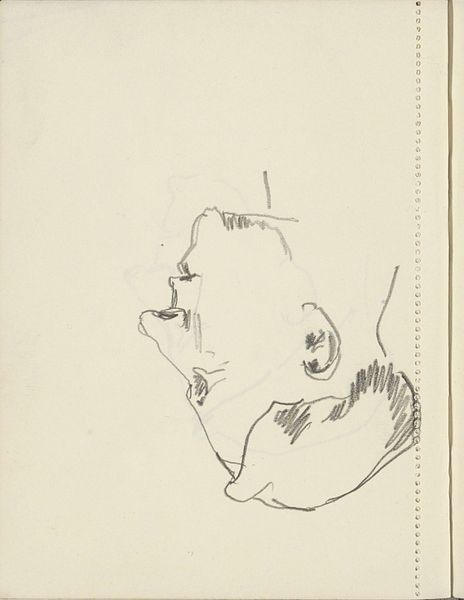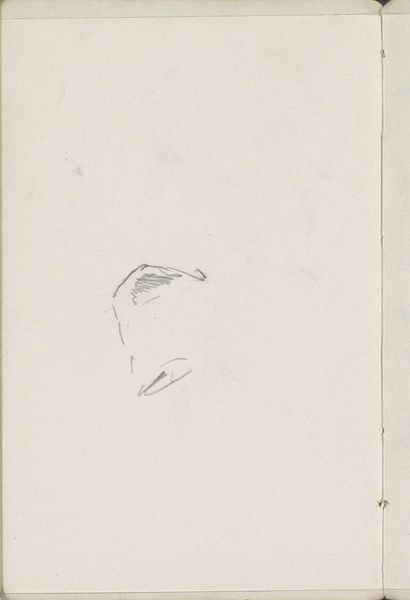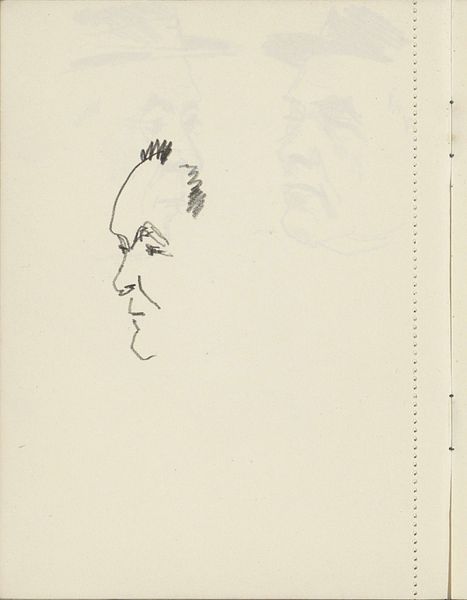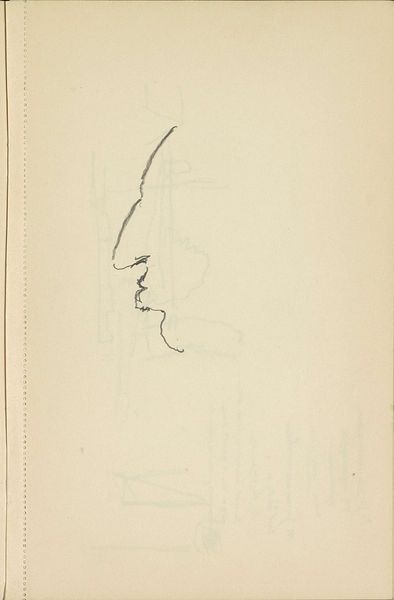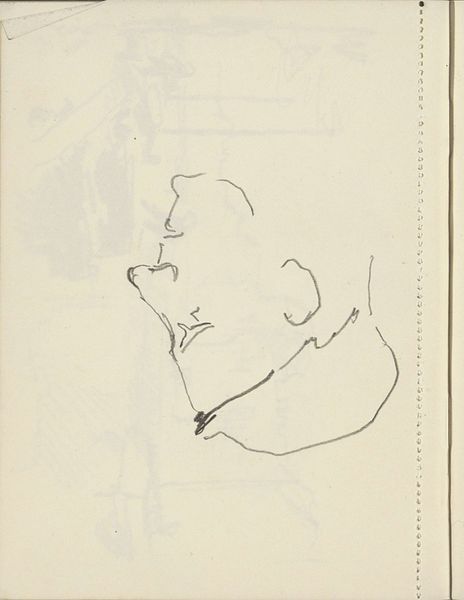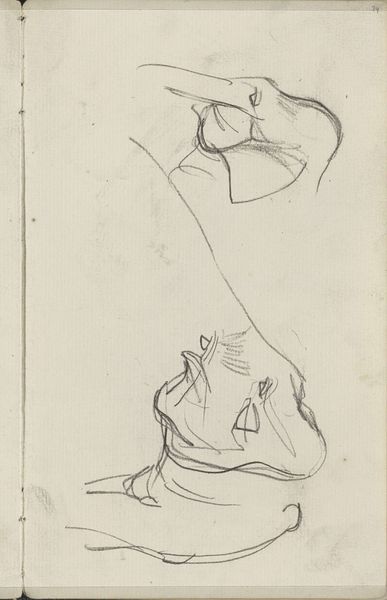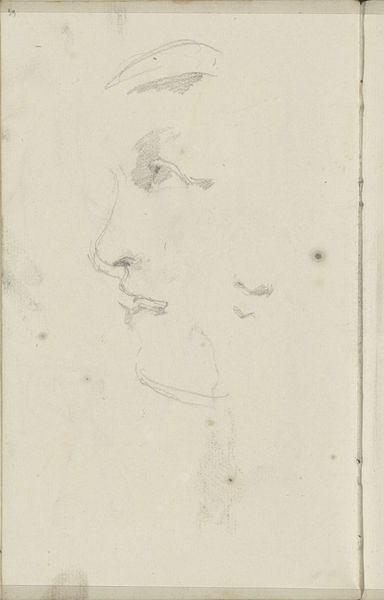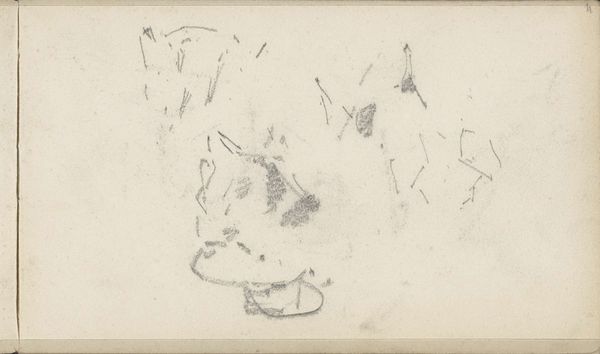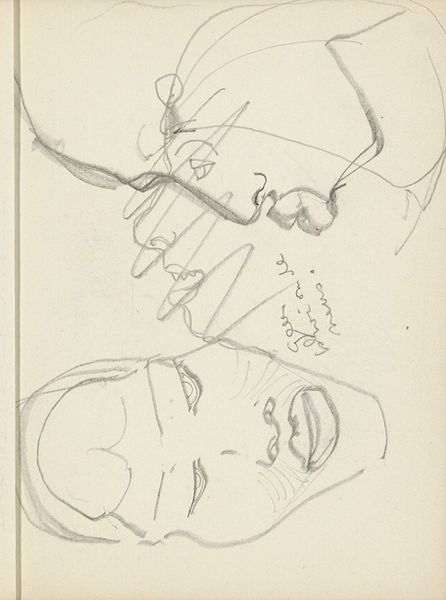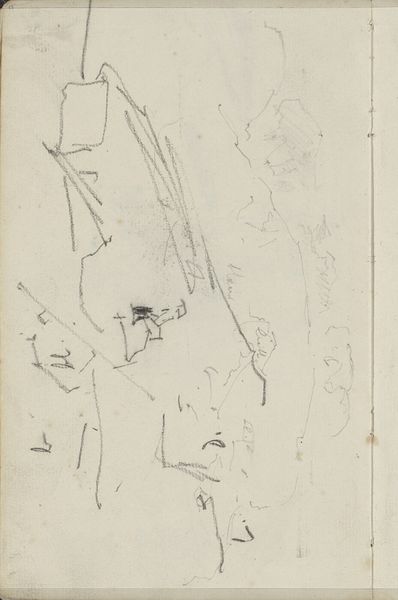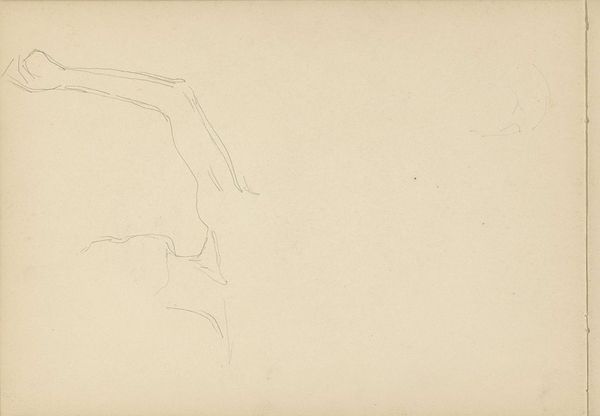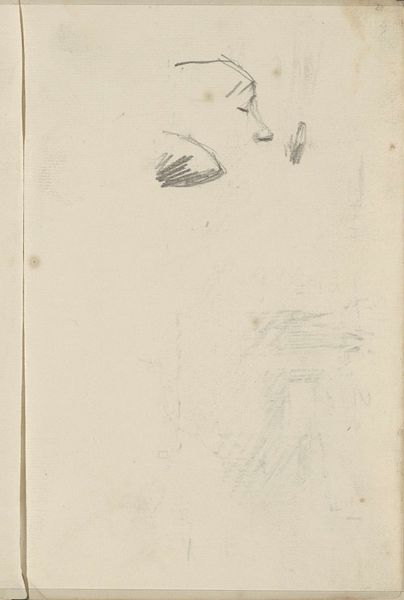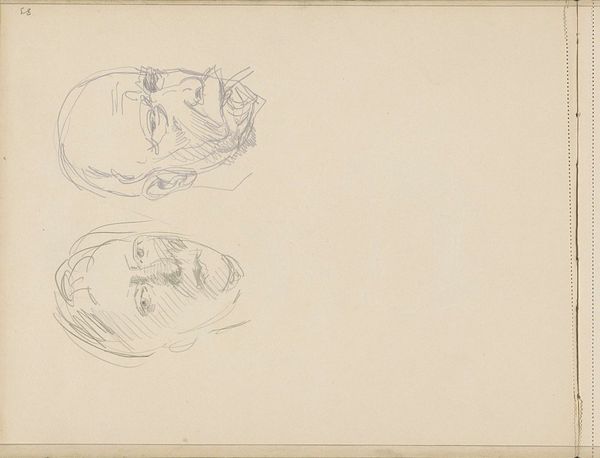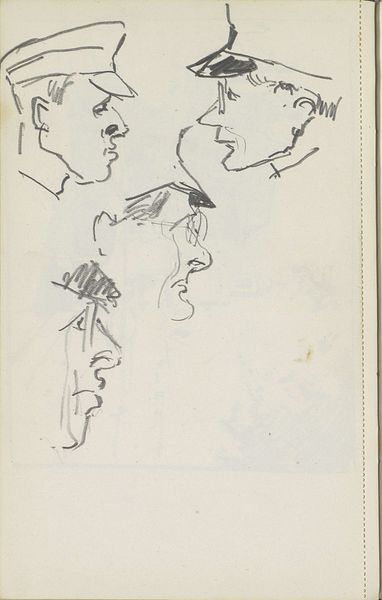
drawing, pencil
#
portrait
#
drawing
#
amateur sketch
#
light pencil work
#
pencil sketch
#
figuration
#
personal sketchbook
#
idea generation sketch
#
ink drawing experimentation
#
pen-ink sketch
#
pencil
#
line
#
sketchbook drawing
#
sketchbook art
#
realism
#
initial sketch
Copyright: Rijks Museum: Open Domain
Editor: Here we have "Head of a Man with a Cap," a pencil drawing by Cornelis Vreedenburgh, created sometime between 1890 and 1946. It's quite minimal, almost ephemeral, like a fleeting thought captured on paper. What strikes you about this piece? Curator: What I see here is a focus on the *means* of production: pencil and paper. This isn't about some grand statement, but about the daily grind of artistic practice, the labour involved in honing one's craft. Consider the accessibility of these materials. Pencil and paper were, and are, readily available, facilitating art-making across social strata. Do you think that fact affects its significance? Editor: That's a great point! It’s definitely not as exclusive as, say, oil paints on a canvas. The sketch’s presence in the Rijksmuseum might elevate its value beyond just a practice piece though, right? Does placing it in a gallery recontextualize the "labour" aspect of the work? Curator: Absolutely. Displaying this drawing prompts questions. Who gets to decide what's worthy of display? What is the social status of drawing vs other 'high art'? Where was this work made, under what studio practices, and what consumption patterns enabled such free labour? Consider its potential mass reproduction too; it subverts notions of originality and value inherent in traditional art markets. Editor: I never thought of it that way. The materials themselves, and how accessible they are, are actually challenging established notions of art value. I am left pondering just how many other drawings from sketchbooks were lost! Curator: Precisely. The sketch makes me rethink labor as a social act. It encourages to seek the social roots of artistic production beyond individual creation and inspiration. Editor: Thank you. I am now aware that the very existence of this unassuming sketch encourages important critical inquiry, making a bigger contribution than it appears to do on the surface.
Comments
No comments
Be the first to comment and join the conversation on the ultimate creative platform.
